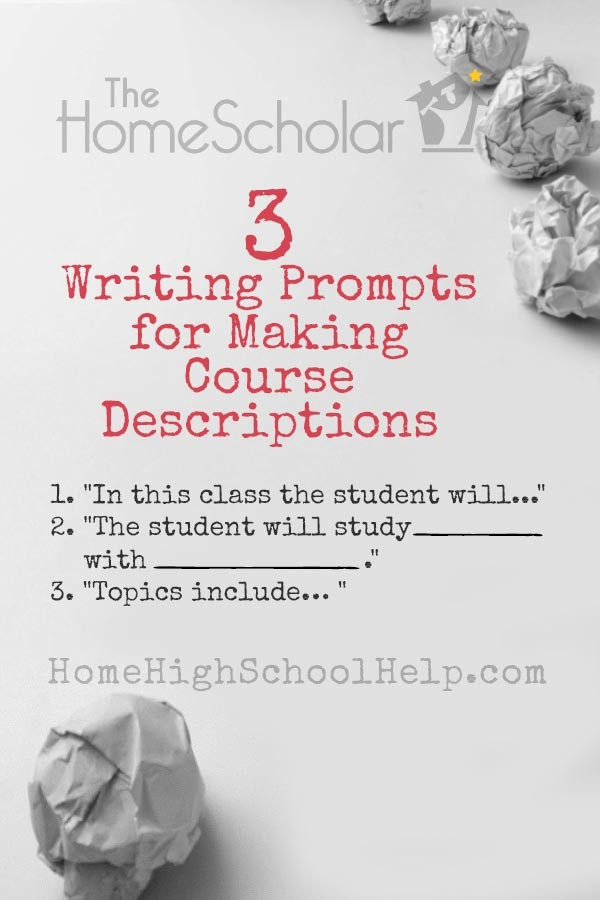
3 Writing Prompts for Course Descriptions
Published on December 30, 2020 by LeeBinz
Some colleges say they don’t need homeschool course descriptions for admission, but most colleges will request or appreciate course descriptions. (Spoiler alert: writing prompts to follow!) Some colleges might even require them. A wise homeschool parent will maximize scholarships by writing homeschool course descriptions for the core classes, electives, and delight directed learning credits that their homeschooled student earn..
A student’s homeschool high school record is the most important factor in college admission decisions. Grades and the academic rigor of classes are even more important than SAT® or ACT® scores. Studies show that the academic rigor of the high school curriculum is the single best predictor of success in college.
Your homeschool course descriptions will provide proof that your curriculum is challenging. Homeschool course descriptions include details that show how your child succeeded and earned a solid GPA using rigorous material. This is why you create course descriptions.
Course descriptions are a 5th grade writing assignment. It’s true! We taught our 5th graders to write a descriptive paragraph, and we can learn how to do it too. And, bonus! You can earn scholarships just for writing course descriptions. Find out how in my article, How Homeschoolers Earn Scholarships
All you have to do is write a simple descriptive paragraph. You do that the exact same way we teach our children how to write a descriptive paragraph. Start by using a writing prompt, and then you can be more creative later, as you become more comfortable. I’ve included he basics of writing course descriptions is below, but you can read my article for full details about course descriptions.
Let me give you three writing prompts you can use to describe what your child did (or will do) in class for the course description
1. “In this class the student will…..”
This prompt gives you the tone and person of your writing style, so you don’t get stuck on past, present, future or pluperfect tense.
2. “The student will study ____ with _____”
This prompt will help helps you focus on what you are writing and why with a fill in the blank style prompt. “The study will study Algebra with Saxon Algebra 1 by Houghton Mifflin Harcourt.”
3. “Topics include… “
This prompt will help you use the table of content to construct a major portion of your course descriptions. “Topics include…” and then you can list things from the table of contents from your textbooks books or online curriculum descriptions.
These writing prompts will get you started. You may want to begin with the EASIEST course descriptions. I suggest you start with a class where you actually use a textbook, maybe math. The curriculum courses are generally the easiest because they will usually have a course description that you can use to springboard from! When you purchase their curriculum, you are given permission to use the description for the class listed on their site or in the book. If there isn’t a course description provided, you can simply start like this:
“In this class, the student will study the concepts of Algebra 1 using Saxon Algebra 1 by Houghton Mifflin Harcourt. Topics include…” then grab all those freakish words from the table of contents.
See, writing course descriptions isn’t hard! You can do this, and you SHOULD do this! Still not convinced that you can do it? My online program, Comprehensive Records Solution, will lead you through writing course descriptions step by step. All of the resources you’ll need in one place, and I even have a glossary of pre-written course descriptions included for you to modify to fit your classes! Now, THAT is easy!





